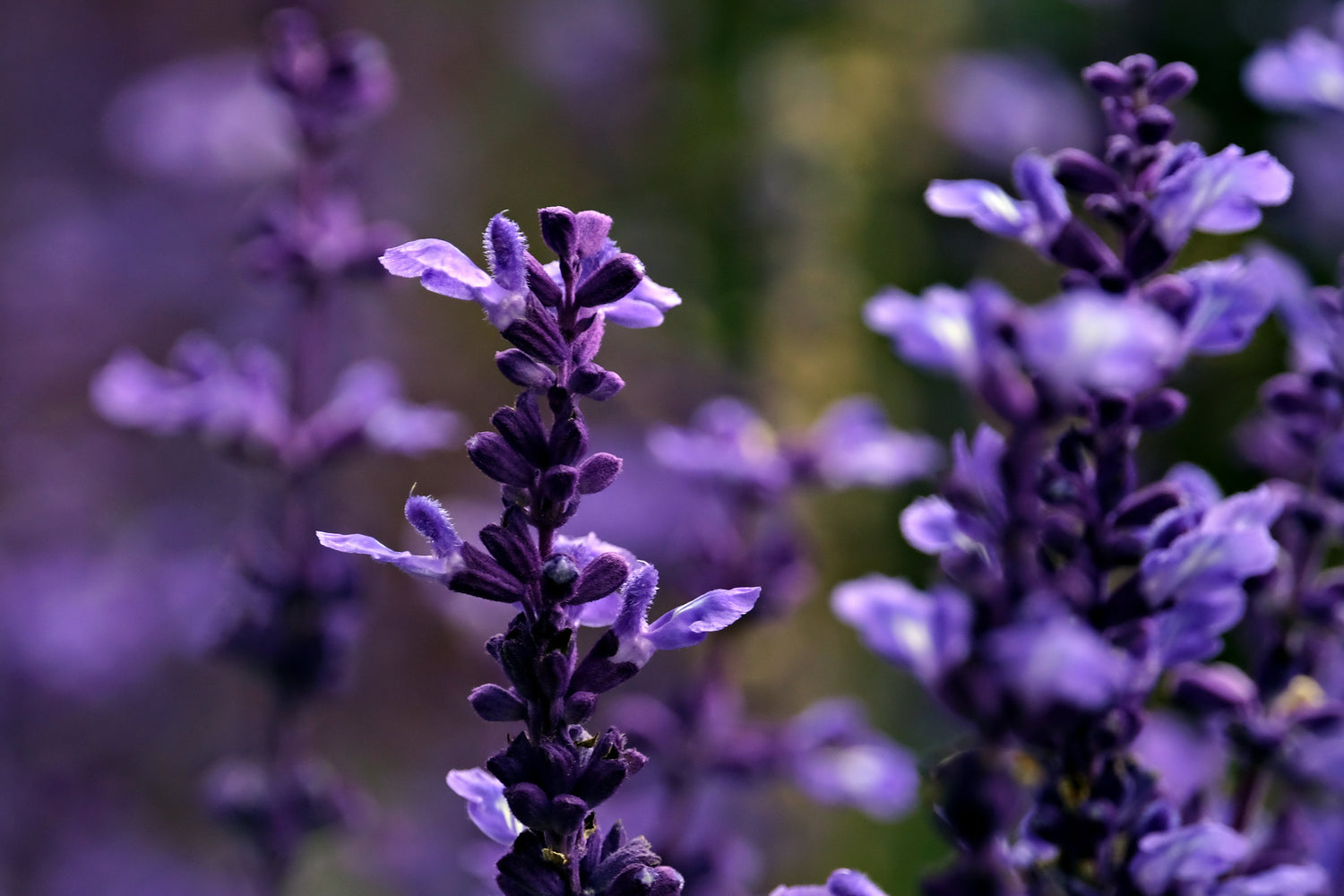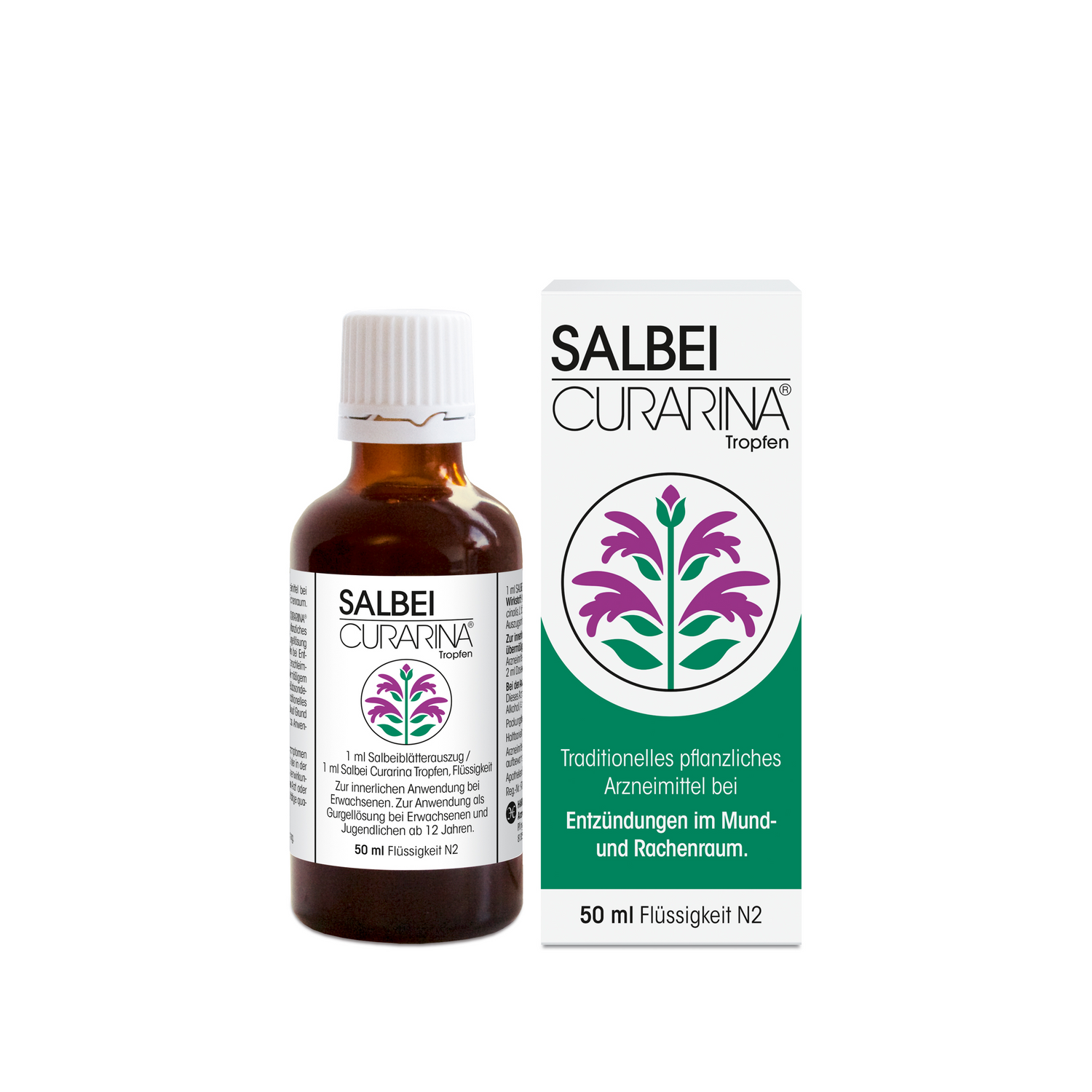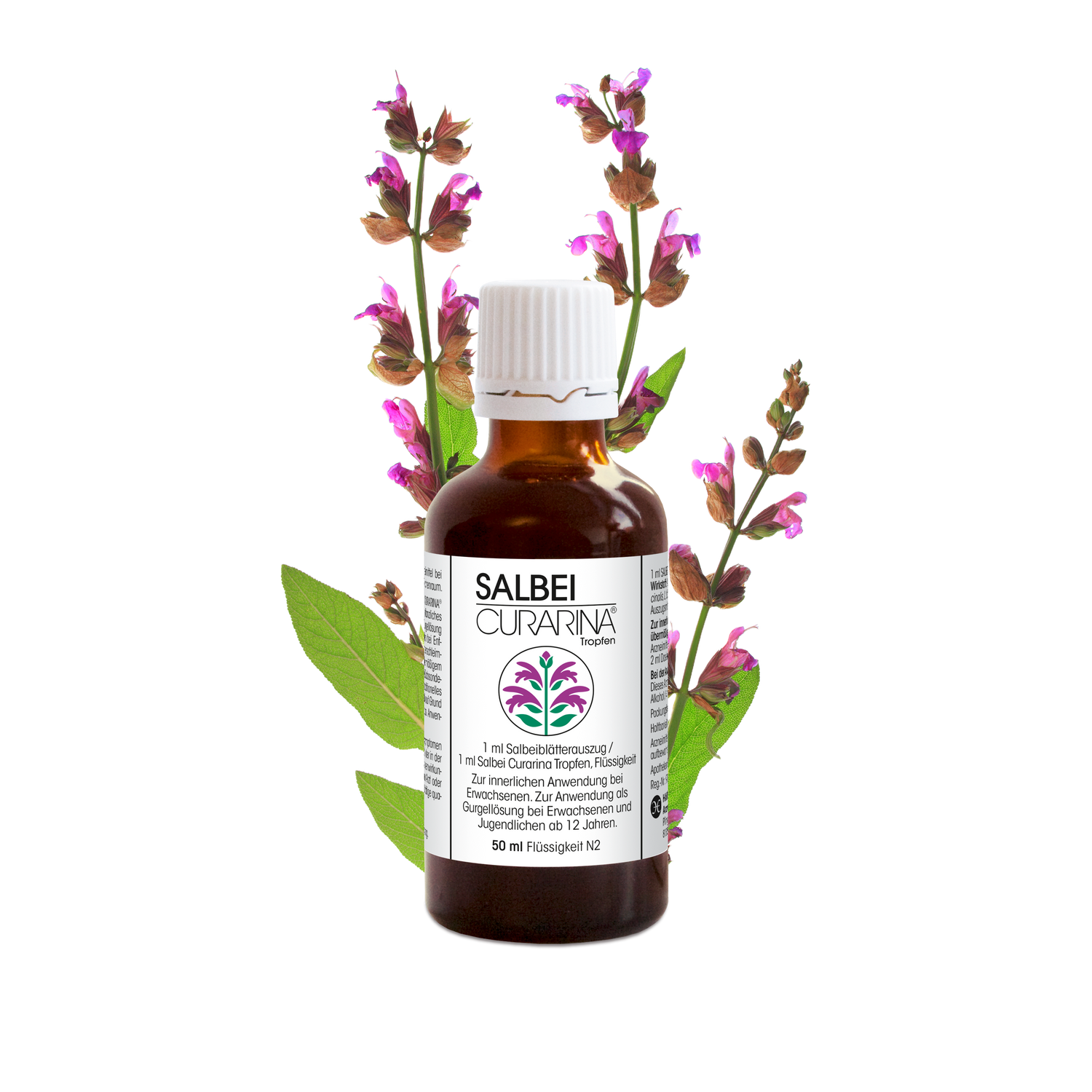
sage
Sage (Salvia officinalis L.) has a long history as a medicinal plant (Egypt, Roman Empire, Middle Ages, monastic medicine) and was considered a general remedy for many uses.
True sage is native to the Mediterranean region and is cultivated in Germany, Albania, Hungary, the former Yugoslavia, and France.
As a mouthwash or gargle:
Medicinal sage is a true all-rounder for self-medication. Its tannins have astringent properties, and the essential oil (containing thujone, cineole, and camphor, among others) primarily promotes secretion and also fights bacteria, fungi, and viruses. Thus, infections of the upper respiratory tract remain among the most important uses of sage today. Several cold symptoms, such as a tickly cough, hoarseness, and sore throat, can be alleviated simultaneously with sage. Its wound-healing and anti-inflammatory effects on mucous membranes make it an ideal mouthwash, for example, for mouth ulcers (canker sores) and gingivitis.
Oral:
When taken internally, sage inhibits sweat gland secretion through its astringent (contracting) effect. Thus, sage is effective against excessive sweating, such as foot and armpit sweating, pathological sweating, and hot flashes during menopause.
In gynecology, sage is recommended for menopausal symptoms primarily because of its components, which resemble female hormones (estrogens) – the so-called "phytoestrogen effect" of sage. During menopause, sage helps against annoying hot flashes and reduces sweat production during periods of extreme sweating.


